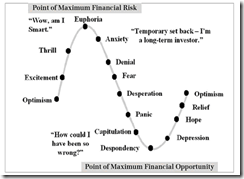I have noted of the intensifying IPO rage in US stocks.
Well it appears that Twitter’s IPO embodies such mania.
Twitter has been priced at $26 per share and will be listed today. With a 70 million shares offered to the public, the firm will raise $1.82bn and place the company’s market capitalization at $14.2 billion.
Twitter’s $26 per has been significantly higher than the original estimated price range at $17-20 according to the Guardian. That’s a 30-50% premium!
Skeptics point to supply side problems of Twitter. Even with 87% shares under a “lock up period”, according to the Quartz, “about 10 million shares held by non-executive employees will be available for sale in February; the bulk of the rest will hit the market in May.”
Then there are stock options via restricted stock units (RSUs) where again the popular social media firm, according to Quartz “has awarded large amounts of restricted stock to its employees, which vest after certain length of service and performance hurdles are met”
And there are also new issues after the IPO which has been estimated to add to the outstanding shares to 723 million
The Quartz raises a very important concern of supply relative to profitability: “The question is whether Twitter’s growth potential can outweigh the dilutive effect of more shares hitting the market. That’s anyone’s guess in a frothy market like this one; Twitter is an unprofitable company being valued at north of $15 billion, and Pinterest, which has yet to make any money, is valued at $4 billion.”
Hedge fund Andy Kessler writing at the Wall Street Journal pitches a buy for Twitter. Why?
This marks a new era for advertisers. The days are over of Mad Men figuring out how to cajole or trick us into buying products through mushy psychological profiling of demographic groups. The new model is going to mean including buyers and sellers in more transparent conversations about a product's pros and cons.
In short, This time is different.
While I share the idea that social media will bring about radical changes of business models, it is one thing to bank on hope (perhaps delusional hope) and it is another thing to see the new models transformed into financial feasibility.
As pointed out above, Twitter’s new model hasn’t been profitable (yet). A table of Twitter’s financials as per the Zero Hedge
Well the zeitgeist of the US IPO mania as clearly revealed by this article from the Wall Street Journal Money Beat Blog: (hat tip Zero hedge) [bold mine]
Ms. Watkins said she plans to buy about 50 shares, which would add up to $1,250 plus any commissions if the stock prices at the top of its current price range, but could cost her more or less depending on what price she happens to get.She said she’s not worried about price increases; she just wants to stick to her purchasing plan and buy the shares immediately, though she hasn’t ruled out selling them quickly if there’s a sharp bump.Ms. Watkins said she’s interested in the hyped stock because of her economics-major nephew and because she knows what happened with Apple Inc. and Facebook Inc. prices and doesn’t want to miss out, even though the 140-character message service, often used on smartphones, is largely foreign to her.“I don’t even use it,” she said. “You know what kind of phone I’ve got? A pre-paid!”Ms. Watkins opened a TD Ameritrade account about four years ago, she said. She bought a few shares of stock in petroleum-related companies and was burned when the price fell through. She doesn’t trade now, relying on the mutual funds available through her employer to manage her nest egg.The avid Mother Jones reader doesn’t really trust the market and says it’s like gambling, but with the addition of lies and subterfuge.“I’m just buying because everybody’s talking about Twitter,” she said. “I’m just gonna take a chance.”
Price insensitive, momentum chasing, “doesn’t want to miss out” and “everybody’s talking about twitter” highlights on the FED’s easy money regime that has incited the bandwagon (herding) effect which has reflected on the syndromes of speculative orgies and the greater fool dynamics, all of which are manifestations of the euphoric phase of the stock market cycle.
As the legendary Jesse Livermore warned: (bold mine)
As the legendary Jesse Livermore warned: (bold mine)
But the average man doesn't wish to be told that it is a bull or a bear market. What he desires is to be told specifically which particular stock to buy or sell. He wants to get something for nothing. He does not wish to work. He doesn't even wish to have to think. It is too much bother to have to count the money that he picks up from the ground.


No comments:
Post a Comment